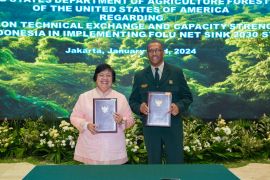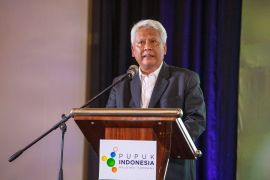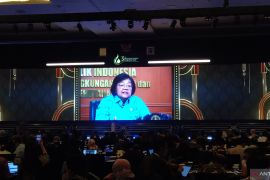Bambang calculated the emission levels with the help of a research team from South Dakota State University (SDSU), Montana University, and the University of Palangkaraya (Central Kalimantan). The research showed that the carbon dioxide level in Indonesia is lower than that measured by IPCC.
"Our calculation, there is a significant difference from the results of IPCC. The concentration of carbon dioxide is minus 8 percent, methane is minus 55 percent, ammonia is minus 86 percent, and carbon monoxide is plus 39 percent," Bambang noted.
The carbon dioxide level, which was measured from smoke samples taken directly in Central Kalimantan, is 8 percent lower than that calculated by IPCC. So also are the levels of methane, ammonia and carbon monoxide, which are different from the one determined by IPCC.
Apart from these laboratory results, Bambang explained, there are differences in determining the type of fires that occurred in Indonesias peat lands in 2015.
He explained that the types of forest fires can be divided into surface fire, peat fire beneath the lands, fires that spread the trees, and fires in hot spots.
Each type of fire produces different gas emissions. For instance, carbon emissions produced from peat fires are distinctly larger than those generated from surface fires.
Meanwhile, according to Bambang, IPCC's calculation generalizes that the fires that took place in 2015 were a peat fire.
The study led by Prof. Mark A Cocharane from SDSU and Prof. Bambang Hero Saharjo from IPB was conducted in Central Kalimantan around the area of the former project of Peat Land Development in 2015 by using Fourier Transform Infrared Spectroscopy (FTIR).
FTIR is an instrument brought from the United States that works the same as the one used by the American Institute of Aeronautics and Space Administration (NASA) on Mars. The study was supported and funded by NASA.(*)
Editor: Heru Purwanto
Copyright © ANTARA 2016











